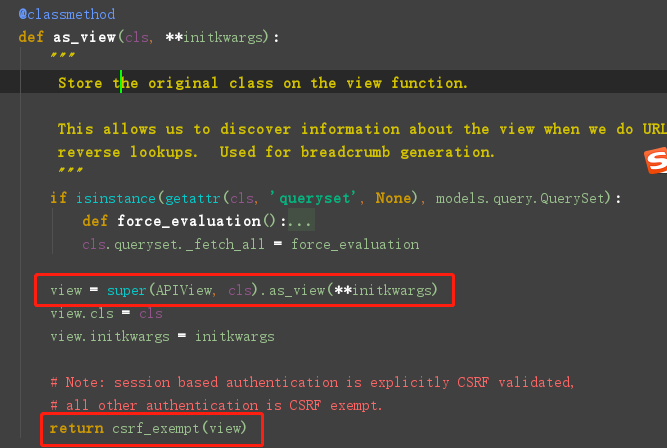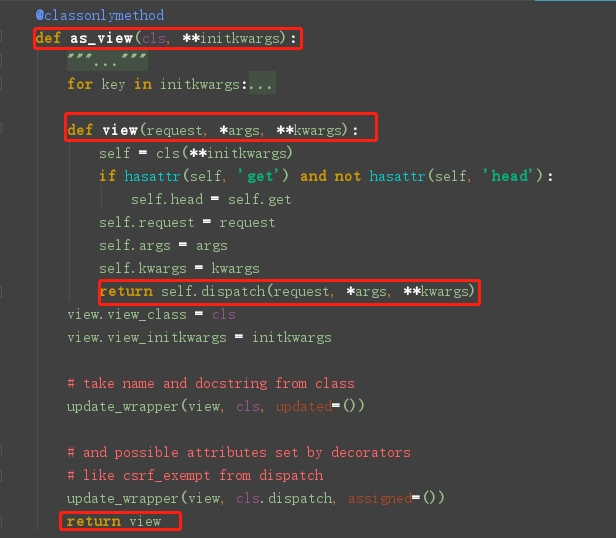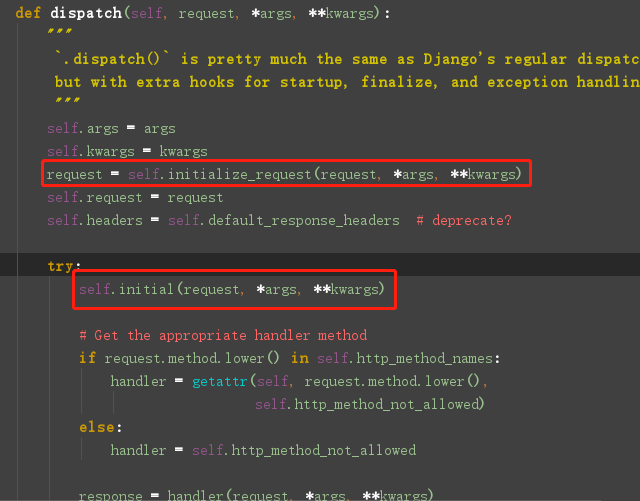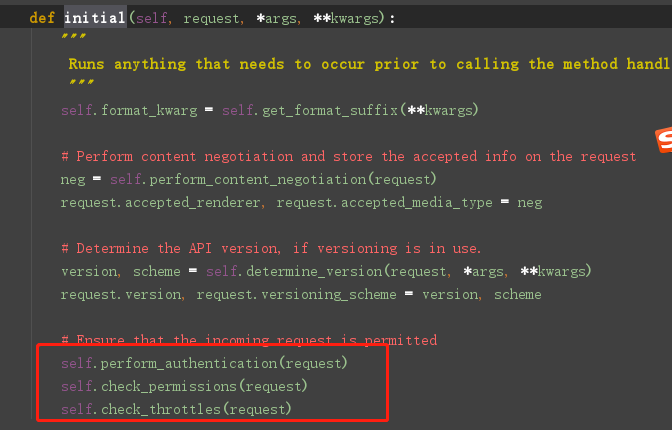认证组件
首先我们来认识一下什么是认证吧
views.py文件
from rest_framework.views import APIView class MyAuth(): def authenticate(self,request): print('认证方法') class Books(APIView): authentication_classes = [MyAuth, ] def get(self,request): response ={'code ': 100, 'msg': '获取成功'} return Response(response)
url文件:
urlpatterns = [ url(r'^admin/', admin.site.urls), url(r'^books/', views.Books.as_view()), ]
现在我们朝着服务端试着发一下请求,结果如下

再看一下服务端

是不是很神奇 ,想知道究竟的话 ,不妨和我一起去看看源码,我们去看一下APIView的源码,
我们知道路由匹配成功以后会走对应的视图函数或者视图类,也就是走里面的as_view函数

其实走的是父类view的as_view的方法,

这时候就走到了APIViewd的dispatch方法,

获取request时根据列表推导式生成了一个个实例对象:

我们来看看authentication classes 到底是什么呢?
其实就是一个配置文件,所以我们认证的是先走view里面的这个类列表,再找django暴露给用户的settings里面的authentication classes ,最后才是django的配置文件


返回的是一个属性


@property def user(self): if not hasattr(self, '_user'): with wrap_attributeerrors(): # 调用 _authenticate 此时的self是request对象 self._authenticate() return self._user def _authenticate(self): # 此时的self是request ,authenticator每一个验证类对象 for authenticator in self.authenticators: try: # 使用authenticator调用它的authenticate() 返回一个元组 #元组的第一个值是request.user,第二个值是request.auth user_auth_tuple = authenticator.authenticate(self) except exceptions.APIException: # 如果没有验证通过,抛出异常 self._not_authenticated() raise # 如果 user_auth_tuple 不为空的话,证明authenticator.authenticate(self) 返回了数据 # **** 有多个验证类的话,最后一个认证类返回值,其他验证类不要返回 # 否则,这个验证类之后的所有验证类都不会被执行 # 如果返回值不为None,赋值后 将会跳出循环 if user_auth_tuple is not None: self._authenticator = authenticator # 进行赋值 self.user, self.auth = user_auth_tuple # 跳出for循环, 验证通过 return self._not_authenticated()
局部使用
在视图类中写
authentication_classes=[MyAuth,]
全局使用
在settings.py中配置
REST_FRAMEWORK={
"DEFAULT_AUTHENTICATION_CLASSES":["app01.MyAuths.MyAuth",]
}
局部禁用:
authentication_classes = []
读源码看到的东西:
如果在项目的setting.py中配置了REST_FRAMEWORK,默认先从项目的setting中取
如果取不到,才去默认的drf配置文件中取
如果用户在视图类中配置了某个,先去用户配置的取
